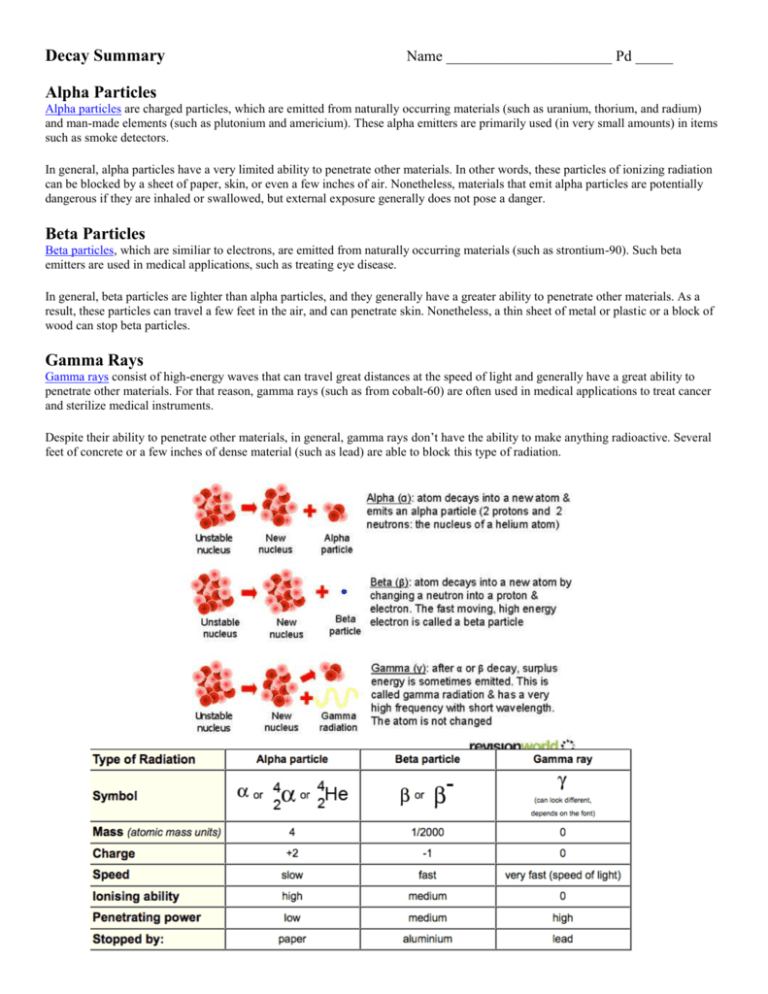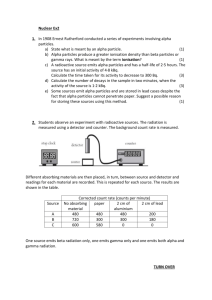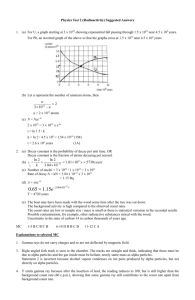Decay Summary
advertisement

Decay Summary Name ______________________ Pd _____ Alpha Particles Alpha particles are charged particles, which are emitted from naturally occurring materials (such as uranium, thorium, and radium) and man-made elements (such as plutonium and americium). These alpha emitters are primarily used (in very small amounts) in items such as smoke detectors. In general, alpha particles have a very limited ability to penetrate other materials. In other words, these particles of ionizing radiation can be blocked by a sheet of paper, skin, or even a few inches of air. Nonetheless, materials that emit alpha particles are potentially dangerous if they are inhaled or swallowed, but external exposure generally does not pose a danger. Beta Particles Beta particles, which are similiar to electrons, are emitted from naturally occurring materials (such as strontium-90). Such beta emitters are used in medical applications, such as treating eye disease. In general, beta particles are lighter than alpha particles, and they generally have a greater ability to penetrate other materials. As a result, these particles can travel a few feet in the air, and can penetrate skin. Nonetheless, a thin sheet of metal or plastic or a block of wood can stop beta particles. Gamma Rays Gamma rays consist of high-energy waves that can travel great distances at the speed of light and generally have a great ability to penetrate other materials. For that reason, gamma rays (such as from cobalt-60) are often used in medical applications to treat cancer and sterilize medical instruments. Despite their ability to penetrate other materials, in general, gamma rays don’t have the ability to make anything radioactive. Several feet of concrete or a few inches of dense material (such as lead) are able to block this type of radiation.











